
On Wednesday, June 7, Concordia’s Nursing and Occupational Therapy students participated in the annual disaster simulation at Concordia’s North Building.
Note: Both of Wednesday’s simulations are described below. The Ronald and Marvel Jones School of Nursing routinely puts together simulation exercises for students throughout the academic year, providing opportunities to refine the skills they’ll need to be successful after graduation.
Here’s the scenario
Inside a large building, a deafening blast was heard, and flashes of light were seen, followed by a rumbling underfoot. Bodies flew through the air and everyone inside the building was knocked to the ground. Everything was chaotic, no one knew the source of the blast, or what would happen next. People started shouting, “It’s a bomb!”
Over 20 victims of various ages (infants, children, adults, and elderly), with diverse backgrounds (those who, prior to the blast, were deaf, pregnant, had dementia, had PTSD, were wheelchair bounds, etc). Nurses had to triage the victims in the field using the color-coding system to know which victims needed immediate care, which ones were stable for a time, which ones could assist others, and which ones were deceased or expected to expire. Victims experienced injuries including severe burns, penetrated by glass or debris, head injuries
Nursing and Occupational Therapy students transported victims to the nearby hospital Emergency department (the Simulation Lab). In the emergency setting victims were again triaged and treated for their injuries in an over-flow situation. Here some injuries worsened, a code occurred, and some died.
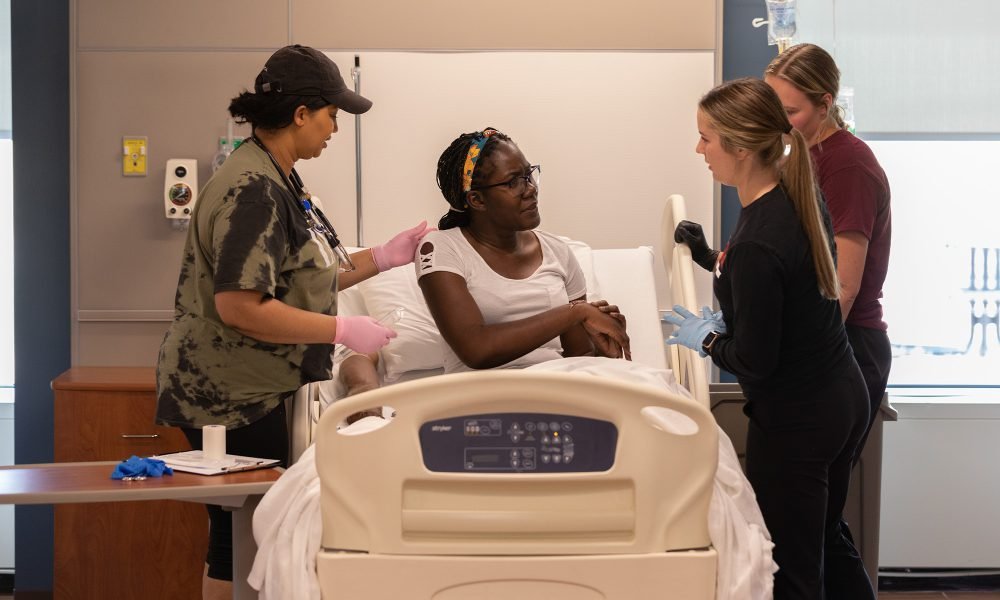
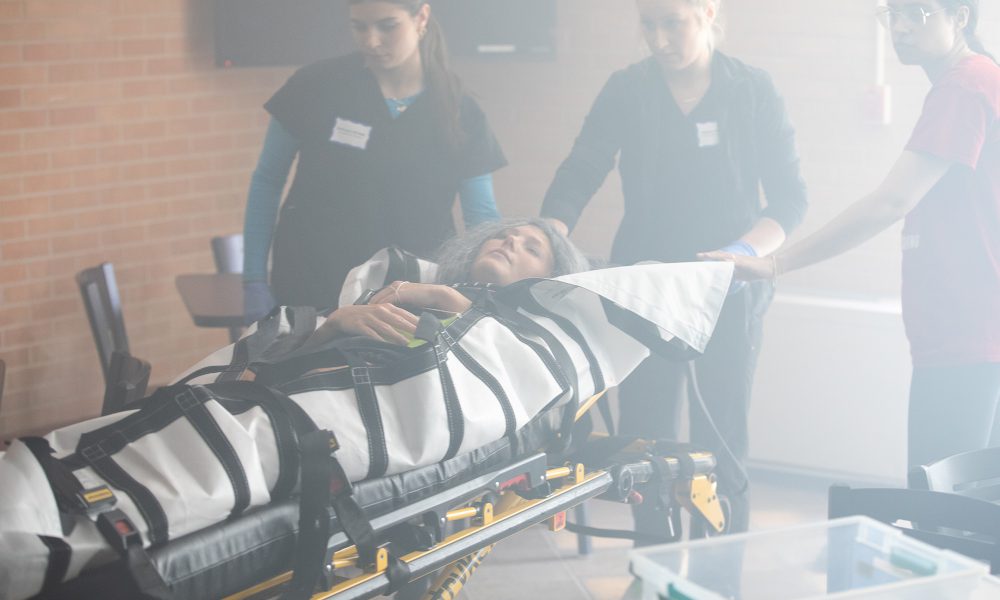


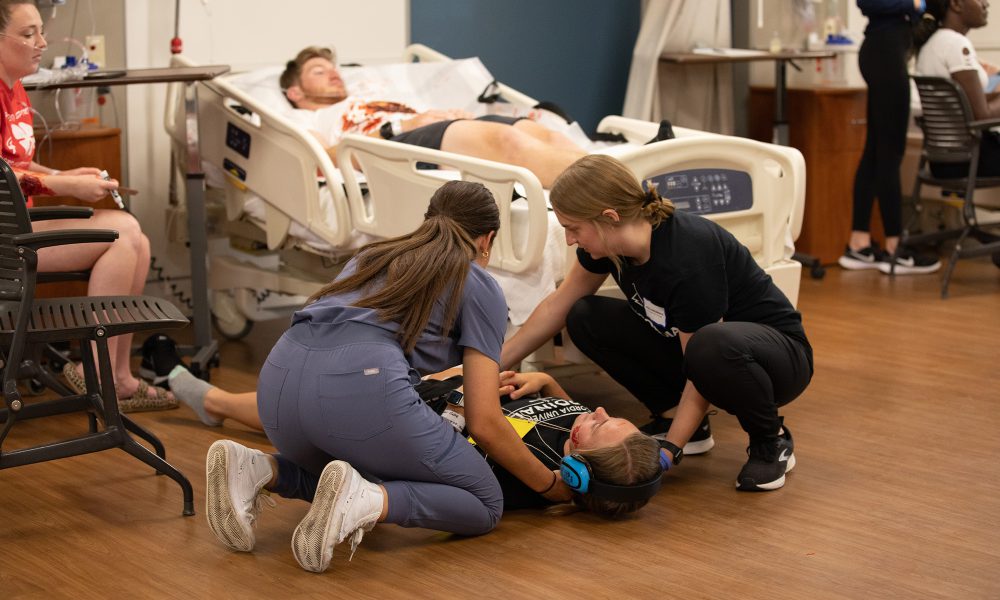

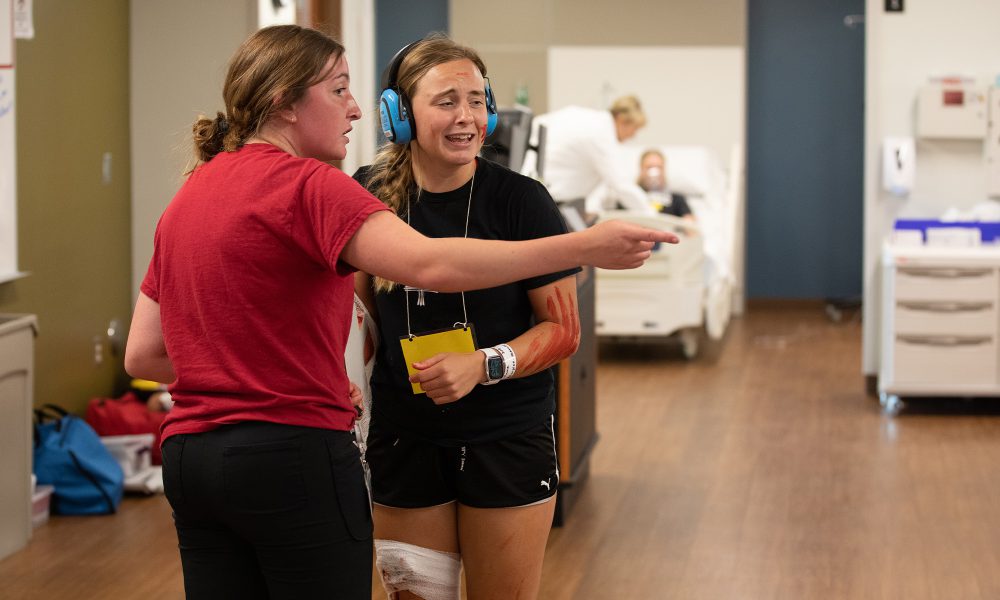
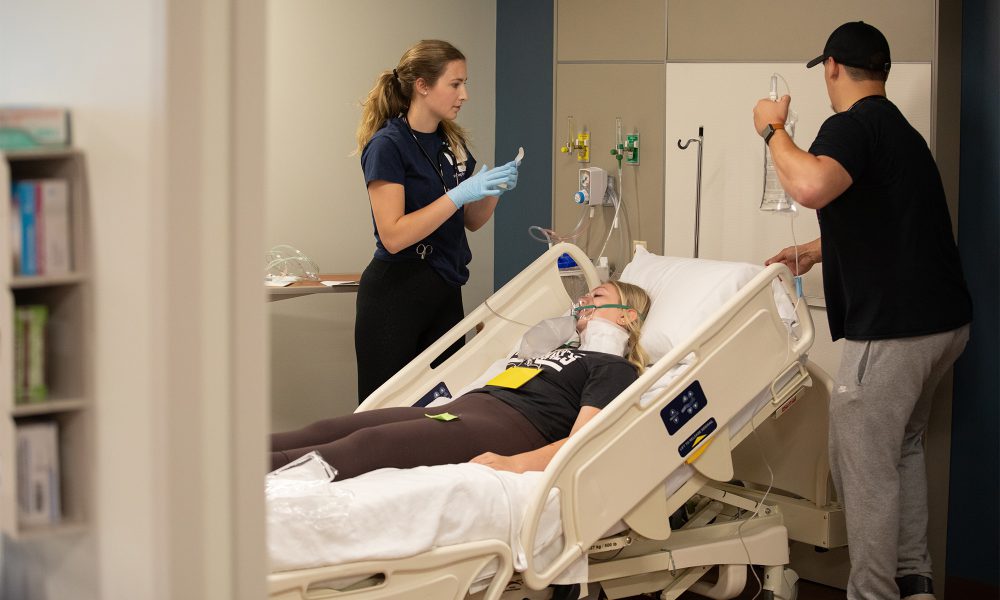
The overall objective of this exercise was for nursing and OT students to practice their roles in a large-scale disaster situation, individually and collectively. 36 students participated in this simulation in various healthcare and civilian roles, and a select group of faculty and staff also played roles in the action.
Simulations at CUAA
The CUAA Simulation program provides an environment where you can apply the knowledge, skills, and values learned in the classroom and skills laboratory into weekly simulated nursing practice. The best way to learn any valuable skill is to take a step out of the classroom and into the real world. CUAA bridges this learning technique with life-like simulations so that students are able to learn and grow in a safe space to make mistakes and ask questions.
While in Simulation, students utilize the latest technology found in hospital settings including medication dispensing units, electronic health records, infusion pumps, and ceiling lifts. Meanwhile, a robust video-capturing system enables students and faculty to view and reflect on their simulation experiences.

Want in?
The Simulation program offers participants a healthcare environment under the guidance of experienced simulation center faculty. Click on the link below to learn more.